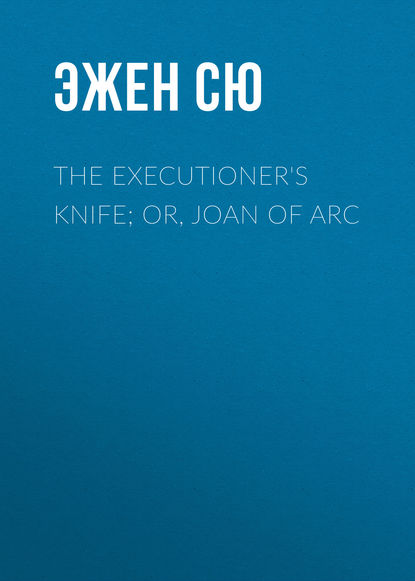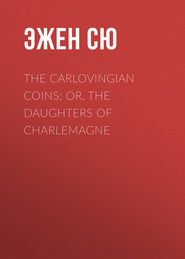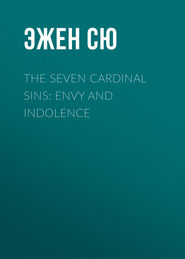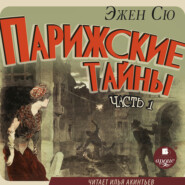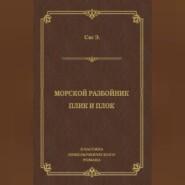По всем вопросам обращайтесь на: info@litportal.ru
(©) 2003-2024.
✖
The Executioner's Knife; Or, Joan of Arc
Настройки чтения
Размер шрифта
Высота строк
Поля
Abbot Agidie – "Joan is a relapsed heretic, no doubt about it. Nevertheless, I am of the opinion that a second abjuration should be proposed to her, under pain of being delivered to the secular arm."
Canon John Pinchon – "Joan has relapsed; I shall adhere to whatever plan of punishment my very dear brothers may decide upon."
Canon William Erard – "I pronounce the said Joan a relapsed sinner and deserving of the pyre."
Chaplain Robert Gilbert – "Joan should be burned as a relapsed sinner and heretic."
Abbot of St. Audoin – "The woman is a relapsed sinner. Let her abjure a second time or be condemned."
Archdeacon John of Castillone – "Let the relapsed sinner be delivered to the secular arm."
Canon Ermangard – "I demand the exemplary death of Joan."
Deacon Boucher – "Joan should be sentenced as a relapsed one."
Prior of Longueville – "That is my opinion. She should be burned alive."
Father Giffard – "I think the relapsed sinner should be sentenced without delay."
Father Haiton – "I pronounce the said Joan a relapsed sinner. I am for her speedy punishment, provided, however, she refuses to abjure a second time."
Canon Marguerie – "Joan is a relapsed sinner. Let her be delivered up to secular justice."
Canon John of L'Epee – "I am of my brother's opinion. She should be burned to death."
Canon Garin – "I think so, too."
Canon Gastinel – "Let us give up the relapsed sinner to the pyre."
Canon Pascal – "That is my opinion. Let her be burned to death."
Father Houdenc – "The ridiculous explanations of the woman are to me an ample proof that she has always been an idolatress and a heretic. Besides that, she is a relapsed sinner. I demand that she be delivered to the secular arm without delay."
Master John of Nibat – "The said Joan is impenitent and a relapsed sinner. Let her undergo her punishment."
Father Fabre – "A heretic by habit, hardened in her errors, a rebel to the Church, the body of the said Joan should be delivered to the flames, and her ashes cast to the winds."
Abbot of Montemart – "I hold as my brother. Only I am of the opinion that she should be given a second chance to abjure."
Father Guelon – "That is my opinion."
Canon Coupequesne – "Mine also."
Canon Guillaume – "Let the said Joan be offered a second chance to retract. If she refuses, then death."
Canon Maurice – "I favor such a second summons, although I do not expect good results from it."
Doctor William of Bandibosc – "I side with my very dear brother."
Deacon Nicolas Caval – "The relapsed sinner should be treated without pity, according to her deserts. She should be burned to death."
Canon Loyseleur – "The said Joan should be delivered to the temporal flames."
Thomas of Courcelles – "The woman is a heretic and relapsed sinner. She may be summoned a second time, and told that if she persists in her errors, she has nothing to expect in this world."
Father John Ledoux – "Although such a second attempt seems to me idle, it might be tried so as to demonstrate the inexhaustible kindness of our mother the Church."
Master John Tiphaine – "I favor this second, though idle, attempt."
Deacon Colombelle – "I am of the same opinion."
Isambard of la Pierre – "Secular justice will take its course if the said Joan refuses to abjure a second time."
From these opinions it transpires that some of the judges demand immediate death, while others, and these are a small majority, favor a second abjuration, although the opinion is general that the attempt is vain. The judges have learned from their accomplices that the heroine is now determined to seek in death the expiation of the confessions which only fear drew from her. More straightforward and frank in his projects, moreover, convinced of the success of his plan, the Bishop sums up the deliberation and absolutely opposes the idea of attempting a second abjuration. Do not most of those who favor the measure consider it idle? Why, then, try it? And even if it were certain that the relapsed sinner would abjure again, the performance would have a deplorable effect. Did not the soldiers and the people, exasperated at the clemency of the Church, cry "Treason!" and seem ready to riot at the time of the first abjuration? Is it wise to incur and provoke a terrible turmoil in the town? Has not the Church given evidence of her maternal charity by admitting Joan to penitence, despite her perverse heresy? How was this act of benevolence rewarded by her? It was rewarded with renewed and redoubled boastfulness, audacity and impiety! Bishop Cauchon closes, conjuring his very dear brothers in the name of the dignity of the Church, in the name of the peace of the town, in the name of their conscience, to declare without superfluous verbiage that the said Joan is a relapsed sinner, and, as such, is given over to the secular arm, in order to be led to death the next day, after being publicly excommunicated by the Church. The judges yield to the views of the prelate. The registrar enters the sentence of death, and the session rises.
Peter Cauchon is the first to leave the chapel. Outside he meets several English captains who are waiting for the issue of the deliberations. One of them, the Earl of Warwick, says to the prelate:
"Well, what has been decided shall be done with the witch?"
"Farewell! It is done!" answers the Bishop with glee.
"The Maid – ".
"Shall be burned to-morrow – burned to death in public," interrupts Bishop Cauchon.
CHAPTER XI
THE PYRE
During the evening of May 29, 1431, the rumor spreads through Rouen that the relapsed sinner is to be burned to death on the following day. That same night carpenters raise the necessary scaffoldings while others build the pyre and plant the stake. Early the next morning companies of English archers form a cordon around the market-place, where Joan Darc is to be executed, and a double file extends into one of the streets that runs into the place. The two files of soldiers leave a wide space between them, connecting the street with the vacant area left around the scaffoldings. These are three in number, the highest of the three being at a little distance from the other two. On one of these, the one to the right, which is covered with purple cloth, rises a daised seat of crimson, ornamented with tufts of white feathers and fringed with gold. A row of seats equally decked extends on both sides of the central and daised throne, which is reached by several steps covered with rich tapestry. The scaffold to the left is of the same dimensions as the first, but it, as well as the benches thereon, is draped in black. The last of the three scaffolds consists of solid masonry about ten feet high, broad at the bottom, and ending in a narrow platform in the middle of which stands a stake furnished with iron chains and clamps. The platform is reached by a narrow set of stairs that is lost to sight in the midst of an enormous pile of fagots mixed with straw and saturated with bitumen and sulphur. The executioners have just heaped up the combustibles on the four sides of the pile of masonry. Tall poles, fastened in the ground close to the pyre bear banners on which the following legends are to be read in large white letters on a black ground:
"Joan, who had herself called the Maid, condemned to be burned alive."
"Falsifier, misleader, and deceiver of the people."
"Soothsayer, superstitious, blasphemer of God."
"Presumptuous, apostate from the faith of Jesus Christ, idolatress, cruel, dissolute."
"Invoker of devils."
"Schismatic, relapsed."[117 - These inscriptions are all recorded by an eye-witness, Clement of Franquenberg; see Quicherat, vol. IV, p. 460.]
At eight all the bells of Rouen begin tolling the funeral knell. Poor Joan, she loved the bells so well in her childhood! The May sun, that same sun that shone upon the first defeat of the English before Orleans, pure and luminous, floods the three scaffolds with its light. The crowd grows thicker around the space kept vacant by the archers; other spectators are grouped at the windows and on the balconies of the old frame houses with pointed gables that enclose the market place. Presently flags and plumes are seen waving, the steel of the casques, the gold and precious stones of the mitres and crosiers are seen shining between the two files of archers. The casqued and mitred gentry are the English captains and the prelates. Prominent among them is the Cardinal of Winchester, Clad in the Roman purple and followed by the Bishop of Boulogne and the Bishop of Beauvais, Peter Cauchon. Behind them come the Earl of Warwick and other noble captains. Slowly and majestically they ascend the stairs of the platform to the right of the pyre. The Cardinal takes his seat upon the dais, while the other dignitaries distribute themselves to his right and left. The other scaffold, that is draped in black, is occupied by the judges of the process, its institutor, its assessors and its registrars.
The appearance and arrival of these illustrious, learned or holy personages does not satisfy the gaping crowd; the condemned girl has not yet appeared. Menacing clamors begin to circulate. These are loudest among the soldiers and the Burgundian partisans, who say:
"Will the Bishop keep his promise this time? Woe to him if he trifles with us."
Canon John Pinchon – "Joan has relapsed; I shall adhere to whatever plan of punishment my very dear brothers may decide upon."
Canon William Erard – "I pronounce the said Joan a relapsed sinner and deserving of the pyre."
Chaplain Robert Gilbert – "Joan should be burned as a relapsed sinner and heretic."
Abbot of St. Audoin – "The woman is a relapsed sinner. Let her abjure a second time or be condemned."
Archdeacon John of Castillone – "Let the relapsed sinner be delivered to the secular arm."
Canon Ermangard – "I demand the exemplary death of Joan."
Deacon Boucher – "Joan should be sentenced as a relapsed one."
Prior of Longueville – "That is my opinion. She should be burned alive."
Father Giffard – "I think the relapsed sinner should be sentenced without delay."
Father Haiton – "I pronounce the said Joan a relapsed sinner. I am for her speedy punishment, provided, however, she refuses to abjure a second time."
Canon Marguerie – "Joan is a relapsed sinner. Let her be delivered up to secular justice."
Canon John of L'Epee – "I am of my brother's opinion. She should be burned to death."
Canon Garin – "I think so, too."
Canon Gastinel – "Let us give up the relapsed sinner to the pyre."
Canon Pascal – "That is my opinion. Let her be burned to death."
Father Houdenc – "The ridiculous explanations of the woman are to me an ample proof that she has always been an idolatress and a heretic. Besides that, she is a relapsed sinner. I demand that she be delivered to the secular arm without delay."
Master John of Nibat – "The said Joan is impenitent and a relapsed sinner. Let her undergo her punishment."
Father Fabre – "A heretic by habit, hardened in her errors, a rebel to the Church, the body of the said Joan should be delivered to the flames, and her ashes cast to the winds."
Abbot of Montemart – "I hold as my brother. Only I am of the opinion that she should be given a second chance to abjure."
Father Guelon – "That is my opinion."
Canon Coupequesne – "Mine also."
Canon Guillaume – "Let the said Joan be offered a second chance to retract. If she refuses, then death."
Canon Maurice – "I favor such a second summons, although I do not expect good results from it."
Doctor William of Bandibosc – "I side with my very dear brother."
Deacon Nicolas Caval – "The relapsed sinner should be treated without pity, according to her deserts. She should be burned to death."
Canon Loyseleur – "The said Joan should be delivered to the temporal flames."
Thomas of Courcelles – "The woman is a heretic and relapsed sinner. She may be summoned a second time, and told that if she persists in her errors, she has nothing to expect in this world."
Father John Ledoux – "Although such a second attempt seems to me idle, it might be tried so as to demonstrate the inexhaustible kindness of our mother the Church."
Master John Tiphaine – "I favor this second, though idle, attempt."
Deacon Colombelle – "I am of the same opinion."
Isambard of la Pierre – "Secular justice will take its course if the said Joan refuses to abjure a second time."
From these opinions it transpires that some of the judges demand immediate death, while others, and these are a small majority, favor a second abjuration, although the opinion is general that the attempt is vain. The judges have learned from their accomplices that the heroine is now determined to seek in death the expiation of the confessions which only fear drew from her. More straightforward and frank in his projects, moreover, convinced of the success of his plan, the Bishop sums up the deliberation and absolutely opposes the idea of attempting a second abjuration. Do not most of those who favor the measure consider it idle? Why, then, try it? And even if it were certain that the relapsed sinner would abjure again, the performance would have a deplorable effect. Did not the soldiers and the people, exasperated at the clemency of the Church, cry "Treason!" and seem ready to riot at the time of the first abjuration? Is it wise to incur and provoke a terrible turmoil in the town? Has not the Church given evidence of her maternal charity by admitting Joan to penitence, despite her perverse heresy? How was this act of benevolence rewarded by her? It was rewarded with renewed and redoubled boastfulness, audacity and impiety! Bishop Cauchon closes, conjuring his very dear brothers in the name of the dignity of the Church, in the name of the peace of the town, in the name of their conscience, to declare without superfluous verbiage that the said Joan is a relapsed sinner, and, as such, is given over to the secular arm, in order to be led to death the next day, after being publicly excommunicated by the Church. The judges yield to the views of the prelate. The registrar enters the sentence of death, and the session rises.
Peter Cauchon is the first to leave the chapel. Outside he meets several English captains who are waiting for the issue of the deliberations. One of them, the Earl of Warwick, says to the prelate:
"Well, what has been decided shall be done with the witch?"
"Farewell! It is done!" answers the Bishop with glee.
"The Maid – ".
"Shall be burned to-morrow – burned to death in public," interrupts Bishop Cauchon.
CHAPTER XI
THE PYRE
During the evening of May 29, 1431, the rumor spreads through Rouen that the relapsed sinner is to be burned to death on the following day. That same night carpenters raise the necessary scaffoldings while others build the pyre and plant the stake. Early the next morning companies of English archers form a cordon around the market-place, where Joan Darc is to be executed, and a double file extends into one of the streets that runs into the place. The two files of soldiers leave a wide space between them, connecting the street with the vacant area left around the scaffoldings. These are three in number, the highest of the three being at a little distance from the other two. On one of these, the one to the right, which is covered with purple cloth, rises a daised seat of crimson, ornamented with tufts of white feathers and fringed with gold. A row of seats equally decked extends on both sides of the central and daised throne, which is reached by several steps covered with rich tapestry. The scaffold to the left is of the same dimensions as the first, but it, as well as the benches thereon, is draped in black. The last of the three scaffolds consists of solid masonry about ten feet high, broad at the bottom, and ending in a narrow platform in the middle of which stands a stake furnished with iron chains and clamps. The platform is reached by a narrow set of stairs that is lost to sight in the midst of an enormous pile of fagots mixed with straw and saturated with bitumen and sulphur. The executioners have just heaped up the combustibles on the four sides of the pile of masonry. Tall poles, fastened in the ground close to the pyre bear banners on which the following legends are to be read in large white letters on a black ground:
"Joan, who had herself called the Maid, condemned to be burned alive."
"Falsifier, misleader, and deceiver of the people."
"Soothsayer, superstitious, blasphemer of God."
"Presumptuous, apostate from the faith of Jesus Christ, idolatress, cruel, dissolute."
"Invoker of devils."
"Schismatic, relapsed."[117 - These inscriptions are all recorded by an eye-witness, Clement of Franquenberg; see Quicherat, vol. IV, p. 460.]
At eight all the bells of Rouen begin tolling the funeral knell. Poor Joan, she loved the bells so well in her childhood! The May sun, that same sun that shone upon the first defeat of the English before Orleans, pure and luminous, floods the three scaffolds with its light. The crowd grows thicker around the space kept vacant by the archers; other spectators are grouped at the windows and on the balconies of the old frame houses with pointed gables that enclose the market place. Presently flags and plumes are seen waving, the steel of the casques, the gold and precious stones of the mitres and crosiers are seen shining between the two files of archers. The casqued and mitred gentry are the English captains and the prelates. Prominent among them is the Cardinal of Winchester, Clad in the Roman purple and followed by the Bishop of Boulogne and the Bishop of Beauvais, Peter Cauchon. Behind them come the Earl of Warwick and other noble captains. Slowly and majestically they ascend the stairs of the platform to the right of the pyre. The Cardinal takes his seat upon the dais, while the other dignitaries distribute themselves to his right and left. The other scaffold, that is draped in black, is occupied by the judges of the process, its institutor, its assessors and its registrars.
The appearance and arrival of these illustrious, learned or holy personages does not satisfy the gaping crowd; the condemned girl has not yet appeared. Menacing clamors begin to circulate. These are loudest among the soldiers and the Burgundian partisans, who say:
"Will the Bishop keep his promise this time? Woe to him if he trifles with us."





